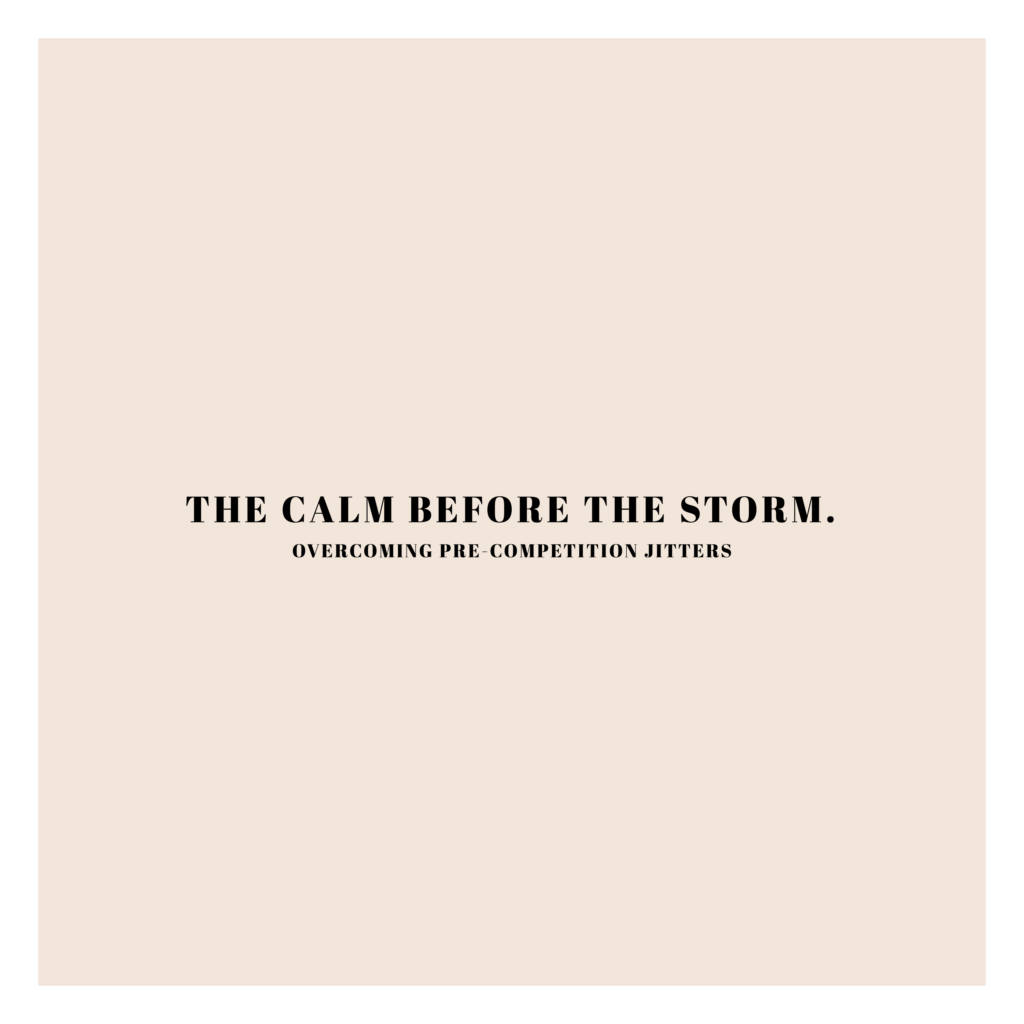
TAN “CAIFAN” WEI YING
Wei Ying is a mixed vegetables rice connoisseur who can solve a Rubik’s cube while squatting his max. He is also an associate Psychologist who did his thesis on music in powerlifting at NUS. His keen interest in muscle dysmorphia (bigorexia) and sports psychology inspires him to bring more awareness on sports psychology and mental health into the realm of resistance training. With 7 years of experience in powerlifting, Wei Ying has contributed greatly to the community as the current President of Powerlifting NUS, the Vice-President of TheGymNation, an IPF referee. He also organized the first-ever Test of Strength (2018).
introduction
Goodnight.
It’s 3am the night before the meet. Your weigh-in is at 8:30am and yet you’re wide awake lying in bed, tossing and turning, wondering if you’re ready to compete. You feel hot and bothered by the ghastly heat, but you’re water cutting so you can’t drink to quench your thirst. Feeling frustrated, you open your eyes and check your phone, thinking that you should watch Russell Orhii’s YouTube video of his recent world record total because you want to be inspired and ready. Why not? You can’t seem to fall asleep anyway.
“Wow, I can’t wait to compete tomorrow! But if I don’t fall asleep now, I’ll feel like shit in the morning and it’ll destroy the meet and I’ll be a failure”, you think to yourself. Your thoughts continue spiraling and you think back to the time you failed your 1RM attempt because you only slept 2 hours the night before. “It’s happening again” you think to yourself. It takes another 30 minutes before your sleep drive kicks in and you finally drift off to sleep.
Does this sound familiar? The night before the meet is a dark, lonely place as athletes strive to get in as much sleep as possible yet they fail miserably. Worries about whether you’ve got all the equipment you need; whether you can get a Grab in the morning; how you will perform; and how your competitors will perform – all run through your mind. It seems like the more you care about how the meet goes, the more intense these worries get. This pre-competition anxiety cannot be avoided, so how do you deal with the perils of insomnia right before the (probably) most important day of your powerlifting career?
sleep
Everyone knows the importance sleep has on our recovery and performance as athletes. Sure, perhaps a Monster or two could mitigate the physical consequences of the lack of sleep before a meet. However, sleep loss also has negative effects on cognitive performance as well, leading to reductions in reaction time, fine motor movement, memory, decision-making and mood-stability (Fullagar et al., 2015). Given the impact that competition peaking already has on our mood states (Coutts et al., 2007; Jürimäe, 2004), the double whammy of poor sleep could further perpetuate these issues in a highly intense meet environment.
As mentioned earlier, poor sleep the night before a competition is often precipitated by pre-competition anxiety. Worrying the night before activates the sympathetic nervous system, which in turn increases physiological arousal and delays the onset of sleep. While it is difficult to completely shut off your mind (try your best, dear), we can reduce the attention given to those negative thoughts through a variety of strategies.
So how much sleep do we need? It seems like 9-10 hours is the sweet spot for athletes to achieve their full potential (Calder, 2002; Mah, 2011), but given the other commitments you have in life, that is likely not going to happen.
How then can we make the most of the time we have allocated for bedtime, to actually sleep?
behavioural strategies
Sleep hygiene refers to the habits that we have prior to bedtime. It is among the simplest strategies used in order to improve sleep for athletes. Here are some tips for you to adopt and ensure that you are in the most optimal condition to fall asleep the week before a meet.
1. Limit the use of caffeinated foods and beverages
Try not to drink pre-workouts that contain caffeine for late night sessions as it will only ruin your sleep cycle. The longer you stay up, the later you will sleep in to achieve the same number of hours of sleep. Other common beverages that powerlifters love drinking include (insert preferred energy drink brand), coffee, and tea.
2. Limit the use of alcohol
Contrary to popular belief, alcohol does not help you sleep better. Sure, it might help you blackout if you drink enough, but the quality of sleep that you will get is fragmented and not optimal for recovery. So please, try not to drink before a meet.
3. Quiet, dark, and cool bedroom
Having a sufficiently quiet and dark space for sleep is pretty much self-explanatory. Aside from that, ensure that the temperature of the room is sufficiently cool. Perhaps you’re overweight by 200g and want to sweat it off in your sleep, but doing so isn’t optimal for falling asleep and our bodies will eventually cool down in our sleep.
4. Limiting screen-time
Blue light emitted from screens delays the release of melatonin and pushes back your bedtime. Strive to reduce screen-time 2 hours before you sleep.
5. Limit cognitively and emotionally stimulating activities
Such activities only serve to increase physiological arousal, the opposite of what we need to fall asleep. Instead of playing monopoly or mahjong, play some relaxing music and wind down for the night.
6. Training
If you are able to, try to avoid training at night. Exercise can elevate mood and release endorphins, causing you to feel more alert and hence unable to fall asleep as quickly. If you’re competing in the morning, take this opportunity to practice and adapt to training in the morning.
7. Stick to a consistent bedtime
This is severely underrated. If you’re sleeping in, it only serves to push back your bedtime for the next day. Keep it consistent so your sleep cycle aligns with your competition.
cognitive strategies
While behavioural strategies can resolve the physiological issues around sleep, cognitive strategies can be used to address the worries we have while lying in bed. These strategies are adapted from Cognitive Behavioural Therapy (CBT), an evidence-based therapy used by clinical psychologists. CBT focuses on restructuring the maladaptive thoughts that individuals have by replacing them with more adaptive interpretations and methods of coping. Below is one of the techniques used in CBT to address those negative thoughts. Keep an open mind and give it a shot!
thought records
Thought records are used to manage unhelpful worries by providing alternative, more adaptive thoughts. To replace the irrational worries that keep you tossing and turning in bed, you must first understand what these thoughts are. Jot down these thoughts in the thought record sheet attached in the link.
Next, write down how these thoughts make you feel. Are you sad? Worried?
What is the evidence for these thoughts? What is the evidence against these thoughts? Oftentimes, people become so fixated on a certain thought that it reduces their ability to view the situation from a different perspective. Challenge those thoughts by thinking of times when the thought wasn’t true.
Finally, come up with an adaptive coping statement. Rather than focusing on the negative thoughts that you have, these statements remind you that you are in control.
See, it’s much easier than you think. Just because you feel afraid that your worst fears might come true, it does not necessarily mean that they will. More often than not, there are times where this simply is not true and situations where you have overcome those fears and worries before. Take a look at the example provided below to see how you can approach the thought record. Practice writing down your thoughts in the days leading up to the meet so you will be well-equipped to deal with whatever comes when it comes.

mindful breathing
This exercise is rather simple. Just breathe. No seriously, just breathe normally and focus on your breath. When you notice your mind wandering towards negative thoughts, acknowledge them and bring your attention back to your breath. This is a great way to stay grounded and in the present moment, rather than living in our head filled with worries. Try it out whenever you feel stressed!
extra tips
Sometimes, the worries that we have are real and we have reason to hold onto them. Thoughts like “what if my equipment isn’t approved by the federation” or “have I packed my baby powder?” often come up right before we fall asleep. To reduce the likelihood of these thoughts occurring, here are some practical tips for competition to make sure you’re ready for the meet:
1. Make a list of the equipment and items you need
Make a checklist of the equipment you need for the competition a week prior. This will give you time to make sure you have all the equipment you need for the competition and at the same time have something to refer to before you head down to the venue.
2. Schedule
Another tip is to time your warm-ups and allow yourself some room for unexpected occurrences. We don’t want to warm up too early or not have enough time for warm-up, hence it’s important for us to begin warming up at the right time. This is something that we can prepare for during training, by recording the average time we take in ideal conditions. Add some extra time to allow for changes in schedule, differing conditions in the warm-up room, or for other athletes to work in with you, as competitors often have to share the equipment.
3. Make a game plan
Preparing for the worst case scenario reduces uncertainty in the event it occurs. Make a game plan for your attempts so you won’t get flustered when calculating your projected total during the meet. Ensure that you and your handler are on the same page so all that is left for you to do is to execute.
conclusion
These strategies are not meant to be a quick fix and are meant to be implemented before the meet. If you’ve read till this point and you’re going to compete tomorrow, you most likely will be bored to sleep already. Jokes aside, competing is stressful but remember, powerlifting is built off its community so don’t forget to have fun and make friends!
In the words of the late father of aesthetics, “We’re all gonna make it brah”. All the best for your upcoming meet!
references
Calder A. Recovery strategies for sports performance. Strategies. 2002;15:8–11.
Coutts AJ, Reaburn ÆP, Piva ÆTJ, et al. Monitoring for overreaching in rugby league players. Eur J Appl Physiol. 2007;99:313–24. https://doi.org/10.1007/s00421-006-0345-z.
Fullagar HHK, Skorski S, Duffield R, et al. Sleep and athletic performance: The effects of sleep loss on exercise performance, and physiological and cognitive responses to exercise. Sports Med. 2015;45:161–86. https://doi.org/10.1007/s40279-014-0260-0.
Jürimäe J, Mäestu J, Purge P, et al. Changes in stress and recovery after heavy training in rowers. J Sci Med Sport. 004;7:335–9. https://doi.org/10.1016/S1440-2440(04)80028-8.
Mah CD, Mah KE, Kezirian EJ, et al. The effects of sleep extension on the athletic performance of collegiate basketball players. Sleep. 2011;34:943–50. https://doi.org/10.5665/sleep. 1132.

